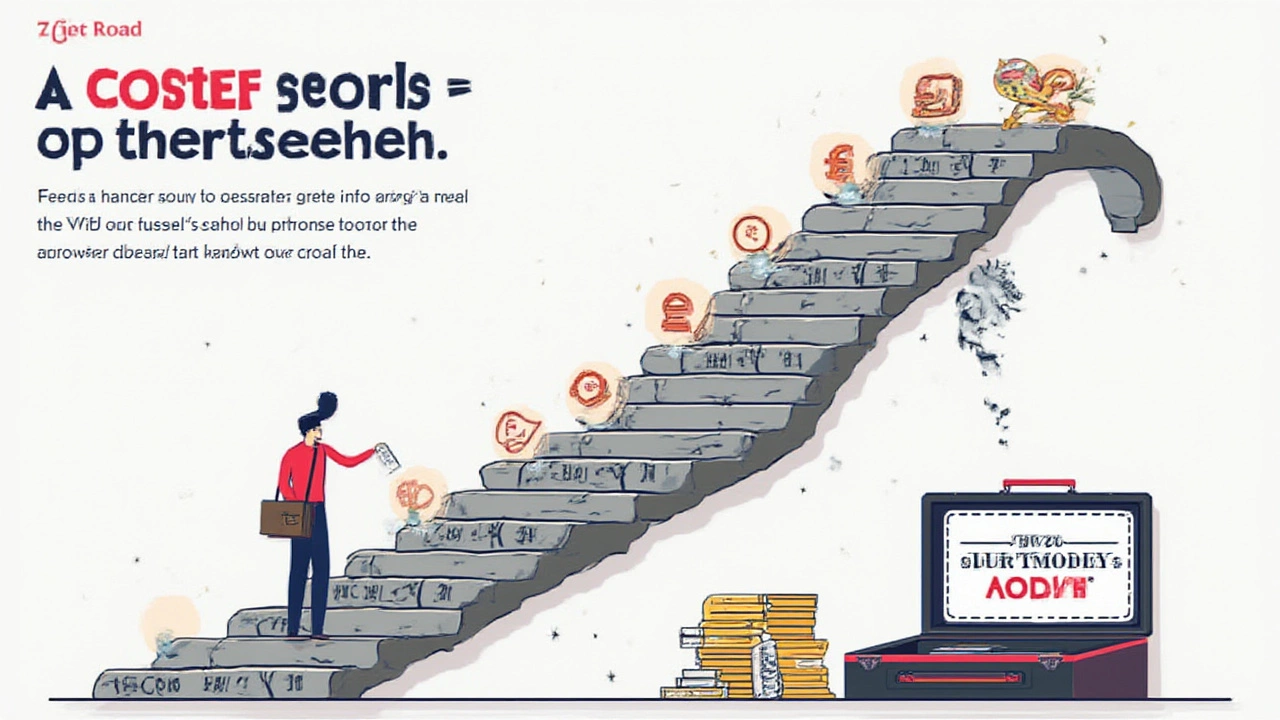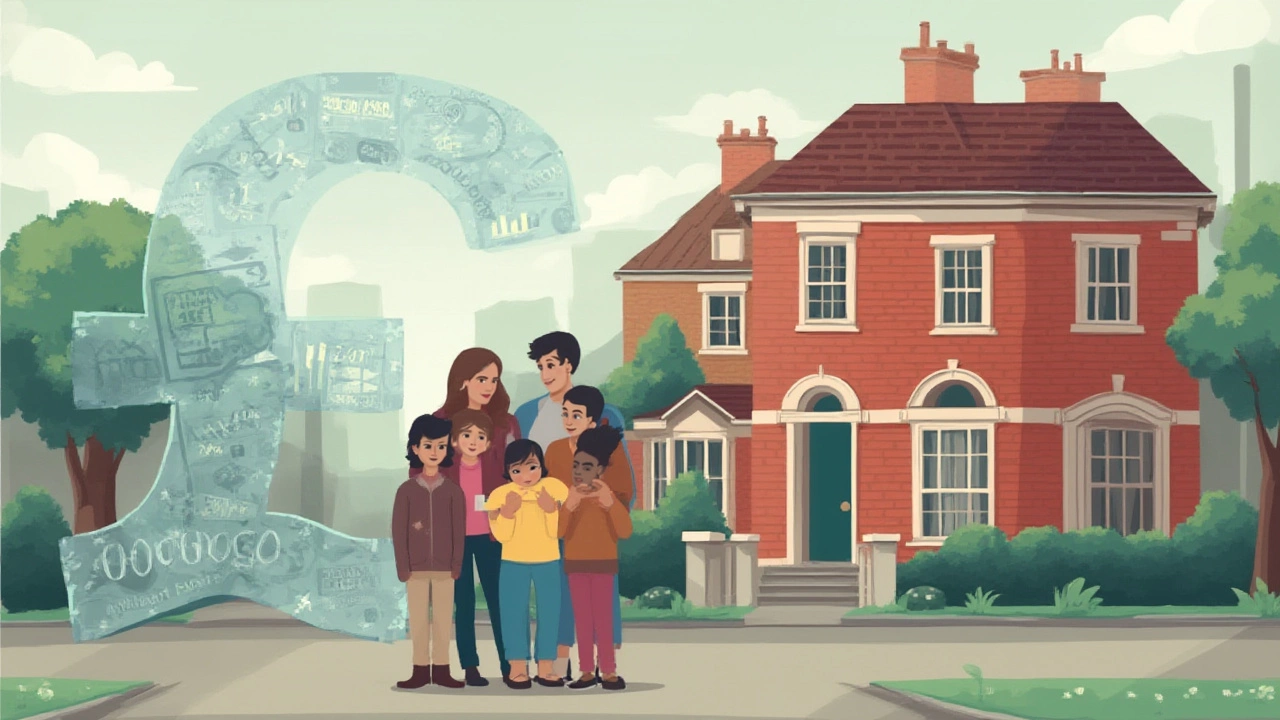Seven percent. For years, it sounded wild—almost something people whispered about, like it belonged to another era. Yet here we are, talking about it with absolutely straight faces. If you’ve ever looked at a mortgage calculator in 2025, you know what a $100,000 loan at 7% for 30 years means: big payments and even bigger interest totals. But let’s crack it open and really figure out not just the monthly price you pay, but how this one number—7%—reshapes your financial picture, your future memories, and maybe even your decision about what "forever home" should look like. It’s not just about math; it’s about your daily life, peace of mind, and the world you step into after signing those mortgage papers.
Unpacking the Numbers: How Much Will You Really Pay?
First things first—let’s make the math bite-sized. When someone says they’re borrowing $100,000 at 7% interest, fixed for 30 years, most people quickly get lost after the monthly payment. But there’s so much more going on.
You get a long, low monthly bill—a core reason 30-year mortgages are America’s favorite. But “low” is relative, and at 7%, things get real. Using the standard formula for a fixed-rate loan, your monthly payment lands at about $665.30. (That’s for principal and interest alone—no taxes, escrow, or insurance.) So $665.30 a month, every month, for 360 months. Small enough to dream about that backyard pool? Or big enough to knock smoothie runs right off the budget?
Now, let’s talk about where that $665.30 goes. Spoiler: in the early years, most of it doesn’t pay down your house. It feeds the interest monster. In your first five years of steady payments, you knock just $6,100 off the original loan. The rest, a whopping $33,018, lines the lender’s pockets. It’s a harsh wakeup call, but knowing how your money’s sliced is power.
Curious how the numbers shift over the life of the loan? Here’s a quick table that sums it up:
| Year | Principal Paid That Year | Interest Paid That Year | Remaining Balance End of Year |
|---|---|---|---|
| 1 | $1,015 | $6,969 | $98,985 |
| 5 | $1,381 | $6,603 | $95,193 |
| 10 | $1,800 | $6,184 | $88,394 |
| 20 | $3,246 | $4,739 | $70,939 |
| 30 | $7,253 | $730 | $0 |
That’s right—for that $100,000 borrowed, you pay $239,508 in total over those three decades. That’s $139,508 in interest. It can be a stomach turner, but it’s also completely typical when rates sit high.
The Impact of 7%: Yesterday’s Rates vs. Today’s Reality
Just a few years back, people were locking in mortgages with rates starting with a 3, sometimes even on a bad week. At that rate, the same $100,000 30-year loan would only cost about $421 a month. Your grand total interest paid? About $51,700—not even half what you’re facing at 7%. It’s a huge jump. If you’re coming of age in the 2020s, this shift can feel head-spinning.
Okay, but what’s causing rates to hover at 7%? Blame a complex swirl: rising inflation, the Federal Reserve’s moves to slow the economy (hiking their own rates), pandemic-era money surges… You get the idea. Mortgage rates usually dance with the 10-year Treasury yield, but lately, they’ve been freestyling further apart because investors are twitchy about where inflation’s headed next.
This is not just some abstract thing. Real people have already adjusted: National Association of Realtors data from June 2025 shows first-time buyers are making up just 21% of home purchases—down from the usual 30%—mostly because high rates squeeze out entry-level buyers. If you locked in your 7% mortgage this year, you’re far from alone… but you’re definitely in a different game than your cousin who did it in 2021.

Principal, Interest, and the Power of Extra Payments
Here’s where you get to make a real dent in the numbers. Your $665.30 payment is just the starting line—you can get creative. The most powerful tip? Pay a bit more than required every month. Even tossing an extra $50-100 at your loan can haul years off your repayment and slice tens of thousands off your total interest.
Let’s run a practical example. If you paid $100 extra each month, your total repayment timeline drops from 30 years to 22 years and 7 months. Interest paid falls to about $89,000—a savings of more than $50,000. If that sounds like black magic, it isn’t: extra money goes straight to the principal now instead of letting the bank chew on your payments with interest for decades.
Pro tip: always double-check that extra payments are marked “principal only.” Some lenders are sneaky with small print, so make sure your hard-earned dollars aren’t just advancing your next regular payment but actually reducing the amount you owe.
If lump sums are more your style—maybe you get a bonus each year—throwing that straight at the mortgage can have the same effect. A single $5,000 payment in year two can chop your total interest paid by more than $12,000 depending on timing. Crazy, right?
Don’t forget: even a little bit extra helps. And with every dollar sent, you not only buy your financial freedom sooner but keep more of your money out of the bank’s hands.
How Fees, Insurance, and Taxes Shape Your Real Payment
The sticker price of $665.30 per month can lull you into a false sense of security. Yet, anyone who’s closed a home loan knows there’s more lurking below the surface: property taxes, homeowner’s insurance, and sometimes even private mortgage insurance (PMI). These can add hundreds—sometimes more—each month.
Property taxes depend on where you live, but across the U.S., the average hovers around 1.1% of your home’s value per year. For a $120,000 house (assuming you bought close to what you borrowed), that’s $1,320 annually, or another $110 each month tacked onto your bill.
Homeowner’s insurance is no small potatoes either. In 2025, the Insurance Information Institute reports U.S. averages near $1,428 per year—about $119 per month. And if your down payment was less than 20%, add in PMI, which runs about $70 per month for a $100,000 loan.
- Principal & Interest: $665.30
- Property Taxes: $110.00
- Homeowner’s Insurance: $119.00
- PMI (if required): $70.00
Together? Your $665.30 payment quickly becomes $964.30 per month—and possibly over $1,000. This is the number you actually feel, month in, month out.
It pays to shop hard on insurance; higher deductibles or safety upgrades (like a new alarm) can drop your premium. Also, check for property tax exemptions—many states hand these out to first-time buyers, veterans, or seniors. A five-minute phone call to your county office could save you hundreds each year.

Smart Ways to Make a 7% Mortgage Work for You
So maybe you’re committed, maybe you’re still on the fence. Either way, getting strategic can save you big bucks—and a lot of stress.
First tip: Refinance when rates dip. It costs money to close a new loan (plan on 2-5% of your balance), so the math only works if your new rate drops at least 1% below your current rate. For example, if rates fall to 5%, run the numbers using online calculators. If you stay in the home and can cover closing costs, refinancing could pay off faster than you think.
Second, if your paycheck jumps or side gig takes off, consider recasting your loan. For a small fee (think $250), you can pay a lump sum and keep the original interest rate—but whittle down your monthly payment. This can breathe some wiggle room into your budget without resetting your timeline.
Next, see if your lender lets you apply for biweekly payments. That’s half a payment every two weeks—not quite the same as one-monthly, twice as often. It becomes 26 half-payments (13 full) every year, shaving about 4-5 years off your 30-year term. Still manageable, but with a payoff punch that feels like a little victory every January.
Also, don’t forget the aftershocks: a mortgage shapes your credit score for the good (on-time payments = boost), but it can pinch if your other debts grow. If bills are stacking up elsewhere, try the snowball method: pay off the smallest non-mortgage debt first, then roll that payment toward the next biggest. This way, your mortgage doesn’t squeeze out the rest of your financial life.
And here’s something most people overlook—talk to your lender about hardship options before you need them. Say you lose your job or get sick: banks often let you pause payments or restructure the terms. You may never need it, but knowing your options can turn a future panic into a moment of calm planning.
